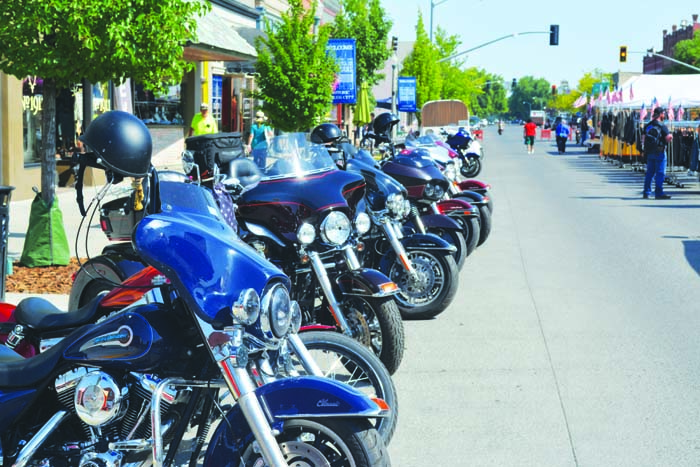COLUMN: The troubling trend from Oregon’s highways
Published 2:15 pm Friday, October 22, 2021
The most dangerous activity most of us engage in on a daily basis is one we generally consider as routine as brushing our teeth.
Trending
Driving an automobile.
So routine, in fact, that I’m sure it wouldn’t tax your internet research skills to find a few videos showing people brushing their teeth while driving.
And doing a variety of other things that don’t involve steering or braking. Or watching the road.
Trending
The notion of the car as a sort of rolling office has become cliché.
Except, of course, desks don’t as a rule run over pedestrians or collide with oncoming traffic.
The chance of dying during any particular drive is, of course, vanishingly small.
Yet fatal crashes are common enough, and have been for the better part of a century, that it seems to me passing strange that we treat driving with such nonchalance.
Obviously this has much to do with the relative simplicity of operating a car.
Most 10-year-olds, I suspect, have the dexterity and coordination needed to drive a few blocks without crashing, at least at modest speeds.
(Whether they have the height needed to reach the pedals or see over the steering wheel is quite another matter.)
Also, we trust 16-year-olds — perhaps trust isn’t the most apt verb — let’s say we allow 16-year-olds to obtain a government-issued license to drive a car.
I wonder if we would be as sanguine as a society, when it comes to driving, if we were to describe the task more explicitly, which is to say, accurately.
Piloting a 4,000-pound vehicle at speeds of 70 mph is a skill more associated with trained professionals than with teenagers, after all.
Yet for all the inherent risk with such a combination of mass and velocity, travel by car is considerably safer today than it was 20 years ago, or 50 years.
But not as safe as it was less than one decade ago.
This troubles me.
The statistics suggest that the prodigious advances made by automotive engineers, with antilock brakes and electronic stability control and a proliferation of airbags that cocoon occupants of new cars, might have reached an apex, in terms of their capacity to save lives.
I wonder if we have reached an intersection, so to speak, where technology is no longer capable of thwarting the basic physics of auto travel.
In 2013 in Oregon, 313 people died in traffic crashes, including pedestrians, bicyclists and motorcycle riders.
That was the state’s lowest annual death tally since the 1940s.
Even more impressive than that raw number, though, is that the fatality rate dropped to that level despite a massive increase in the number of cars on Oregon’s roads — about 3½ million more compared with 1949.
To account for such changes, traffic engineers compile the fatality rate per 100 million miles traveled. In 1949, Oregon’s rate was 6.38 deaths per 100 million miles traveled. In 2013 the rate was 0.93.
But the trend didn’t continue.
Oregon’s annual fatality totals, and rates, have increased in several years since 2013.
From 2013 to 2016, for instance, the death toll rose by 58% while the number of miles traveled in the state increased by just 8.9%.
The fatality rate, after dipping slightly below 1 per 100 million miles traveled in both 2011 and 2013, has been above 1.18 every year since 2014.
Baker County’s annual fatalities during the period have ranged from two in 2013 to seven in 2016 and 2017.
Statewide, 2021 is on pace to be the deadliest year since at least 2013, when there were 512 fatalities.
As of Oct. 18, there had been 450 deaths in Oregon during 2021. That’s a 14.2% increase from the same period in 2020.
And then there are those teenagers.
While I was working on this column I received an email from LendingTree LLC that included an analysis of federal traffic crash statistics from 2010 to 2019, the last year for which detailed records are available.
During that decade, the number of fatal crashes in Oregon that involved a driver age 15 to 20 rose by 58% — the highest rate among states.
As the parent of a 14-year-old daughter who already is requesting a copy of the Oregon driver’s manual, and a 10-year-old son, this is the sort of statistic that causes me to wake from dreadful dreams in the dead of night.
Assessing these statistics, and deriving from them possible contributing factors, is the work of months (and of experts).
But this is a subject that bears watching.
It is, of course, impossible to eliminate danger in driving.
People will crash, and no complement of air bags, no installation of cunning computers that apply the brakes during a skid, can overcome the obstinate physical laws I mentioned earlier.
But I’m bothered by the prospect that what we achieved in 2013 was ephemeral, that our roads will inevitably become more dangerous.
I understand, obviously, that the more important factor here is not the machines but the people who operate them.
I hope the researchers who study such things in exquisite detail can pinpoint particular problems with how we drive — problems that perhaps can be mitigated through changes in how we test prospective drivers or issue licenses.
In the meantime I’ll continue to leave my toothbrush where it belongs — in its little cup next to the bathroom sink, far from the driver’s seat.
Jayson Jacoby is editor of the Baker City Herald.







